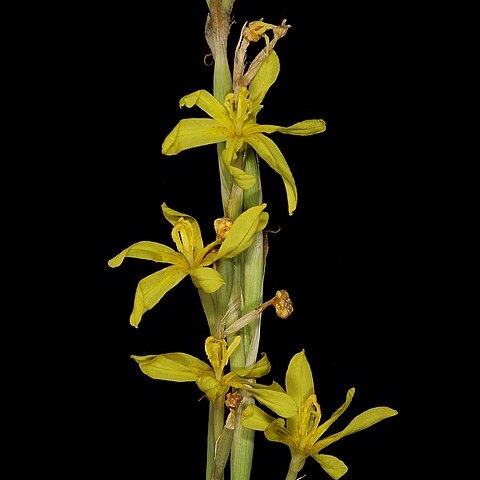Perennial herb, geophyte, 0.10-0.25 m high; corm tunics black, reticulate; stem erect, sometimes weakly flexed above node. Leaf 1, basal, sheathing, falcate or erect, trailing, canaliculate. Spathes 35-60 mm long. Inflorescence with yellow or pink flowers marked dark yellow in centre; nectar guides speckled green; tepals erect below, spreading above; outer tepals 18-24 mm long, ± oblong, with 3 mm long claw; inner tepals smaller, narrowly obovate. Stamens: filaments partly united, diverging; anthers straight, 4-6 mm long, exceeding stigma. Ovary 10 mm long; style branching at apex of filament column; style branches diverging; stigma bilobed. Flowering time Aug.-Nov.
Cormous geophyte, up to 400 mm high. Leaves solitary, basal, falcate or erect. Flowers: style branches not petaloid; perianth with outer segments 18-25 x 5-9 mm, yellow, dark yellow and green, inconspicuous nectar guides; Aug.-Oct.
Geophyte, up to 400 mm tall. Outer tepals 18-25 mm long, 5-9 mm wide. Corm 10-20 mm in diameter with black, reticulate tunics. Leaf solitary, basal, falcate or erect. Flowers yellow and dark yellow and green.

